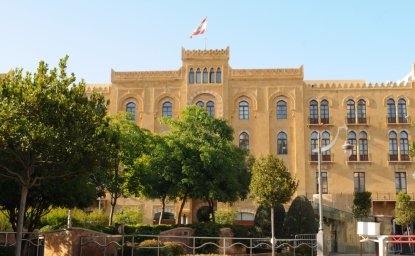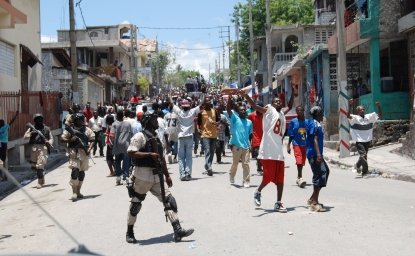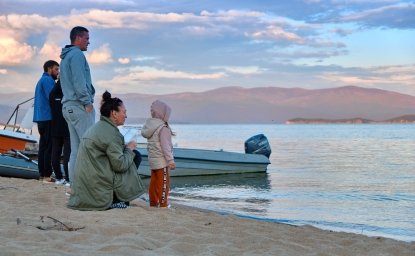Kennan Cable No. 74: Crisis in Belarus: Main Phases and the Role of Russia, the European Union, and the United States

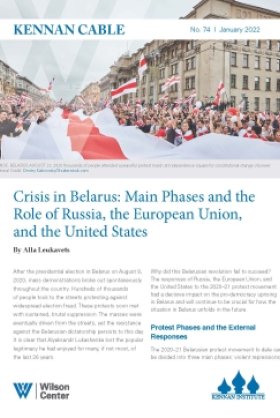
After the presidential election in Belarus on August 9, 2020, mass demonstrations broke out spontaneously throughout the country. Hundreds of thousands of people took to the streets protesting against widespread election fraud. These protests soon met with sustained, brutal suppression. The masses were eventually driven from the streets, yet the resistance against the Belarusian dictatorship persists to this day. It is clear that Alyaksandr Lukashenka lost the popular legitimacy he had enjoyed for many, if not most, of the last 26 years.
Why did this Belarusian revolution fail to succeed? The responses of Russia, the European Union, and the United States to the 2020–21 protest movement had a decisive impact on the pro-democracy uprising in Belarus and will continue to be crucial for how the situation in Belarus unfolds in the future.
Protest Phases and the External Responses
The 2020–21 Belarusian protest movement to date can be divided into three main phases: violent repressions; temporary cease-fire; and regime retaliation. A fourth phase, power transition, will likely happen after a referendum scheduled for February 27, 2022 (see Figure 1).
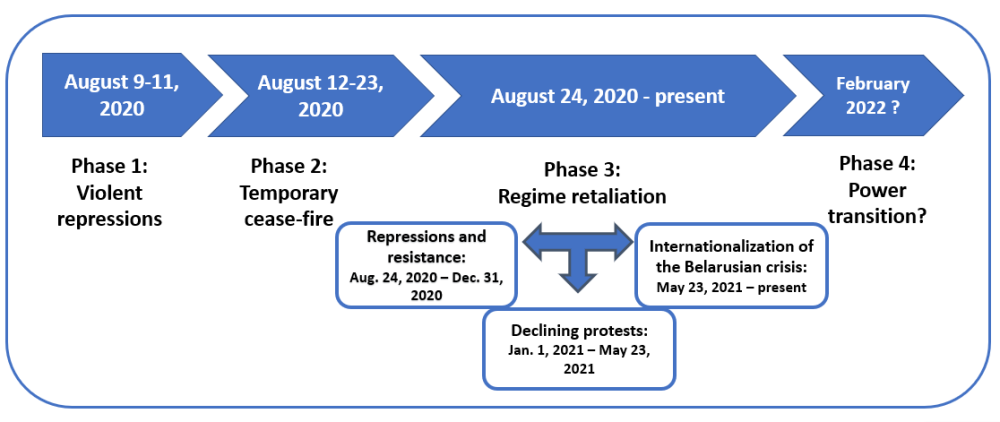
Figure 1: Phases of the Belarusian crisis from August 2020–December 2021
Phase 1: Violent Repressions
The two days following the election witnessed an initial wave of mass protests, and an initial brutal suppression inflicted by Lukashenka’s government. Over 6,000 people were detained, 450 were brutally beaten and tortured, and several were killed.[1]
During this phase, Russia was one of the first countries to signal its political support for the Belarusian regime. Vladimir Putin publicly congratulated Lukashenka on his re-election and said: “I hope that your state activity will help enhance mutually beneficial Russian-Belarusian relations across the board, advance cooperation in the Union State, promote integration processes in the Eurasian Economic Space and the CIS as well as the military and political ties in the Collective Security Treaty Organization.”[2] Russia clearly had no interest in seeing a prolonged escalation of the pro-democracy struggle in Belarus and the possibility of a scenario akin to the 2014 Maidan revolution in Ukraine. The Kremlin also saw the opportunity to use the unfolding crisis in Belarus as a bargaining advantage to pressure the weakened Lukashenka regime into deeper political, economic, and military integration within the Union State of Russia and Belarus created in 1999.[3]
In contrast, the EU’s response to the crisis in Belarus during this phase was slow and weak.[4] It hesitated to send a clear message to the Belarusian authorities from the start of the electoral campaign regarding the red lines that the regime should not have crossed. The subsequent actions undertaken by the EU, consisting of diplomatic instruments and sanctions, were limited in their impact due to differences of opinion in member states over the common policy towards the crisis in Belarus.
Similar to the EU, the U.S. was rather slow to react to the violations of human rights in Belarus in the aftermath of its 2020 presidential elections. The start of the pro-democracy uprising in Belarus coincided with the final months of Donald Trump’s presidency, and events in Belarus were almost completely overshadowed by the 2020 November presidential elections in America.
Phase 2: Temporary Cease-fire
From August 12–23, mass protests in Belarus took different forms. First human chains of solidarity spread across Belarus. They were initiated by women dressed in white and carrying flowers with portraits of the detained protesters, condemning the crackdown and calling for an end to police brutality. These efforts culminated in massive demonstrations on August 16, 2020 (the “March of Freedom”) and on August 23 (the “March of the New Belarus”). During each march, over 200,000 people went into the streets to demand new elections. As protesters took to the streets, there were mass resignations of journalists from state TV channels and radio and a wave of strikes at the big factories, theaters, and IT companies. The main opposition organ, the Coordination Council, emerged at this time to end the post-election political crisis, ensure social cohesion, and protect the sovereignty and independence of Belarus.[5]
Once again, Russia was quick to offer its support to the Belarusian regime and preclude the Belarusian pro-democracy revolution from succeeding. As strikes crippled major industrial enterprises, perhaps more serious to Lukashenka’s prospects were the resignations from Belarusian mass media. Russia sent its own journalists, reporters, and spin doctors to sustain pro-regime messaging across all broadcast platforms in Belarus. This logistical support was crucial for maintaining Lukashenka’s propaganda machine. Additional resources from Russia helped preclude the industrial strikes from being effective. Russian operatives helped to stage pro-regime marches and to improve the Belarusian government’s visibility and messaging on social media, including Telegram channels.
Russia’s logistical assistance was reinforced with further political support. Putin held several publicly announced phone calls with Lukashenka, during which he expressed his approval of Lukashenka’s actions and signaled readiness to offer economic and military assistance in case the crisis escalated. Russia’s support was crucial for helping Lukashenka to stay afloat and not resign at the earliest stages of this crisis. It also emboldened Lukashenka to resume his campaign of repression.
The EU and the U.S. failed to take advantage of the opportunities of the temporary cease-fire to counterbalance Russia’s influence in Belarus. The Trump administration continued to act as a silent observer of the Belarusian crisis, while the EU was entangled in its own internal divisions over what sanctions packages to impose against the Lukashenka regime. At the insistence of some EU member states, Lukashenka and his family were not included in the list of restrictive measures in the first round of sanctions. In addition, the adoption of the first package of sanctions was initially paralyzed by Cyprus. Cyprus officials wanted the restrictive measures to be tied to sanctions against Turkey, based on a dispute over gas drilling in the eastern Mediterranean.[6] The veto was overcome in October 2020, but only after the first wave of brutal repressions and thousands of violent detentions in Belarus.
Phase 3: Regime Retaliation
The “Cyprus incident” demonstrated that the EU was unable to speak with one voice on important issues requiring its unanimity. As a result, the temporary cease-fire phase did not end in the resignation of Lukashenka, but instead quickly led to regime retaliation (August 24, 2020 to the present). This lengthy phase can be divided into several sub-phases.
During the first sub-phase (August 24–December 31, 2020), the Belarusian government began to detain and interrogate leaders of the opposition and strike committees. Many of them were forced into exile or were arrested and imprisoned. The approach of the riot police towards protesters who took part in the regular weekly pro-democracy marches quickly turned repressive and violent. Starting on October 12, 2020, the Ministry of Internal Affairs granted clearance to security forces to use lethal weapons “to preclude radicalization of the protests.”[7] Repression of the demonstrators culminated in the death of a young Belarusian artist Raman Bandarenka as a result of a brutal beating by police on November 12, 2020. Thousands attended Bandarenka’s funeral to pay tribute, and the leader of the Belarusian opposition, Sviatlana Tsikhanouskaya, called him "an innocent victim of the terrible system."[8]
During this period, Putin continued to express his support of Lukashenka. Substantial economic assistance amounting to $1.5 billion in USD, which was promised during the personal meeting of Lukashenka and Putin on September 14, 2020, signaled unequivocal support from Moscow. In fact, it directly correlated with the increased scale of repressions which followed the meeting. Starting from the beginning of the post-electoral rallies in Belarus, the Kremlin has also continuously expressed its readiness to support the regime with military means. The possibility of providing military assistance was also emphasized during the bilateral military exercise called Slavic Brotherhood-2020, which took place September 14–25, 2020 and featured about 300 servicemen and 70 pieces of military hardware from Russia.[9]
Meanwhile, the EU increased its support of the Belarusian democratic movement. The first round of sanctions was followed by a second and third round of restrictive measures in November and December 2020, respectively. These consisted of entry bans and account freezes against 88 representatives of the Belarusian state apparatus, as well as seven Belarusian companies that support the dictatorship in Belarus. However, the impact of these measures on the Belarusian regime has been limited, particularly when compared to the EU sanctions imposed in the aftermath of the 2010 presidential elections, when far less pervasive repressions led to restrictions against 170 figures in the Lukashenka regime.[10]
In addition to sanctions, the EU emphasized the need for a national dialogue and the involvement of the Organization for Security and Co-operation in Europe (OSCE)—especially activating its Moscow Mechanism. The main goal of this mechanism was to carry out a fact-finding expert mission focusing on the alleged human rights violations in Belarus. The final report was presented in November 2020.[11]
The EU has also expressed its support for the protesters and political opposition through targeted financial assistance. In December 2020, it adopted a €24 million assistance package, to be dispersed directly to Belarusian civil society, youth groups, and certain small and medium-sized enterprises. The program, the “EU4Belarus: Solidarity with the People of Belarus,” is part of an overall €53 million support package announced in August by the European Commission President, Ursula von der Leyen, which also includes €3.7 million EU emergency support for victims of oppression and for the independent media.[12]
After Joe Biden was elected president in November 2020, the U.S. started to increase its attention toward Belarus. The Belarus Democracy, Human Rights, and Sovereignty Act was signed in December 2020 as part of a large legislative package. The Act expands the president's authority to impose sanctions on the regime and provide assistance to Belarus.
In spite of this support, the intensity of the protest movement considerably declined, starting in January 2021—and the period of regime retaliation entered its second sub-phase: declining protests (January 1–May 23, 2021). The Lukashenka regime tightened the screws, detaining those who continued to protest through performative politics, such as displaying the white-red-white flag or engaging in criticisms of the authorities online. During this phase, the regime passed three new laws: “Countering Extremism,” “Rehabilitation of Nazism,” and “Mass Events.” These hastily enacted laws further drastically restricted freedoms of expression, association, and assembly in Belarus.[13]
Russia continued to provide comprehensive support to the Lukashenka regime. Putin and Lukashenka met twice during this period (in February and April 2021), to demonstrate the strength of intergovernmental ties between the two states. In addition, Russia assisted the Belarusian regime with a strategic operation: on April 12, 2021, Belarusian and Russian counterintelligence defeated an alleged coup attempt. According to official statements from both Russia and Belarus, the coup was allegedly staged by the U.S. As a result of the joint operation, Alexander Feduta (a journalist and literary critic), Yury Zenkovich (an attorney and a dual citizen of Belarus and the U.S.), and Grigory Kostusev (chairperson of the Belarusian Popular Front opposition party) were arrested during their meeting in Moscow, extradited to Belarus, and imprisoned in the KGB detention center in Minsk.[14] According to the Belarusian political opposition, this operation was a provocation organized by the secret services of Russia and Belarus to intensify repression.[15]
In contrast to Russia, attention from both the EU and the U.S. toward the situation in Belarus declined during this period. Neither undertook any new substantial steps to weaken the Lukashenka regime or to support the pro-democracy uprising in Belarus.
In late May, the third sub-phase of regime retaliation (May 23, 2021–present) began. In this phase, the internationalization of the Belarusian crisis, the Lukashenka regime not only continued to detain journalists, analysts, and civil society activists inside Belarus, but also started to retaliate against external actors. The most infamous episode was the forced landing of Ryanair Flight 4978 from Greece to Lithuania on May 23. Under escort of a Belarusian fighter, and under the pretense of a bomb on board, the Ryanair plane was forced to land in Minsk, where Belarusian security officials detained the opposition journalist Raman Pratasevich and his companion Safiya Sapega.
A month later, on June 28, Belarus announced its withdrawal from the Eastern Partnership program. The government expelled the head of the EU delegation to Belarus, while recalling its own representative to the EU back to Minsk for consultations. This episode coincided with the early efforts of Belarus to escalate a crisis at the EU border by sending migrants, primarily from Iraq and Syria, over the border into Lithuania and Poland. At the instigation of Minsk, there were over 33,000 attempts to cross the Polish border illegally in 2021, with 17,000 attempts in October alone.[16] The EU accuses Lukashenka of luring migrants from the Middle East and Africa and pushing them into Poland and Lithuania in retaliation against the EU for its sanctions.
Lukashenka has found ample reward for his actions from Moscow. Soon after the forced landing of the Ryanair flight, Lukashenka met with Putin in Sochi (May 28), who confirmed the tranche of $500 million of Russian aid to the Belarusian regime. The two leaders held several other bilateral meetings in 2021, each confirming Belarus-Russia allied relations. Russia is commonly believed to have provided technical support to Lukashenka in the forced landing of the Ryanair flight, as well as during the migration crisis created by the Belarusian regime on the EU border.[17]
Russian-Belarusian military cooperation during this period has substantially increased. The nations held the Zapad-2021 military exercise during September, which was significantly larger in scope than the Zapad-2017 military maneuvers.[18] The two national security forces also held several ad hoc military exercises in November, during the peak of the migration crisis. Finally, at the bilateral meeting on December 29, Putin welcomed Lukashenka's proposal to hold another round of military drills, suggesting that they could take place in February or March 2022.[19]
If Belarusian-Russian cooperation deepened over this period, the severity of the EU’s response also increased. In response to the Ryanair incident, the EU enacted a ban, on June 4, on the overflight of EU airspace and on access to EU airports by all Belarusian carriers. This event also hastened the negotiation of a fourth package of sanctions, which was adopted on June 21. The EU enacted a fifth round of sanctions in December in response to the migration crisis that the Belarusian regime has orchestrated on EU borders. The EU’s restrictive measures on Belarus now apply to a total of 183 persons and 26 entities. Those designated are subject to an asset freeze and travel ban preventing them from entering or transiting through EU territories.
The fifth package of sanctions was accompanied by increased assistance to the people of Belarus. The EU allocated an additional €30 million to support young people, independent media, small- and medium-sized enterprises in exile, and cultural actors. In addition, it pledged €3 billion in economic support for a future democratic Belarus.[20]
The U.S., in coordination with the EU, also considerably stepped up its pressure on the Belarusian regime at this time. In July 2021, a bipartisan Friends of Belarus Congressional Caucus was launched, and President Biden held a brief meeting with the leader of the Belarusian opposition, Sviatlana Tsikhanouskaya. Both sent a strong message of American solidarity with the Belarusian pro-democracy movement. Furthermore, the U.S. introduced its own package of sanctions in August, targeting 23 individuals and 21 entities that have been labelled as Lukashenka’s “wallets”. These individuals and entities provide various means of support to the Belarusian regime in exchange for preferential treatment in the form of tax breaks, favorable contracts and other mechanisms.[21] Finally, in December, the American leadership (in cooperation with Canada, the EU, and the United Kingdom) introduced comprehensive and mutually reinforcing sanctions against an additional 20 individuals and 12 entities in Belarus responsible for the migration crisis at the EU borders.[22]
Future Outlook
The next phase of the Belarusian crisis will be one of power transition. This transition will likely happen after the constitutional referendum scheduled for February 27, 2022. The current draft of the new Belarusian constitution proposes several crucial changes for the political system in Belarus.[23]
First, the amendments aim to weaken the powers of the Belarusian parliament and to strengthen the role of the All-Belarusian People's Assembly (ABPA). This body, which under the present constitution does not have governing status, would be endowed with wide-ranging powers and would consist of 1,200 delegates loyal to the regime. The ABPA would have the power to approve Belarus’s foreign and security policy, propose changes to the constitution, draft laws, select judges of the top courts, and have other functions. The acting president would automatically become a member of the ABPA and potentially serve as its chair, if elected by the other delegates. By strengthening the powers of the ABPA, Lukashenka is trying to create an alternative center of power which would allow him to stay in the Belarusian political arena even if he decides to step down as a president.
Second, the constitutional amendments envisage the president’s immunity from prosecution and prohibit anyone who temporarily left the country in the last 20 years from running for presidency. This provision directly targets members of Belarusian political opposition who were forced to live into exile to avoid repressions. This amendment deprives the Belarusian opposition of the opportunity to challenge the ruling regime directly inside Belarus, and provides additional guarantees for the safety of Lukashenka and his entourage.
Finally, the new constitutional provisions also grant the president immunity from prosecution and introduce a limit of two five-year presidential terms in office. However, since these restrictions would only apply going forward, Lukashenka could potentially stay in power until 2035.
Lukashenka has not yet declared whether he will step down after the referendum. The current political instability in the region, including the January protests in Kazakhstan and the escalating tensions between Russian and Ukraine, increase the chances that Lukashenka will stay in power after the referendum.[24] In either case, the West will not cease pressure on the Belarusian regime and will continue to support those fighting for democratic reforms there. For its part, Russia will continue to use the vulnerability of Lukashenka and his close entourage to increase its political, economic, and military presence in Belarus.
Conclusion
Russia, the EU and the U.S. have all played an important role in the evolution of the 2020–21 Belarusian post-electoral crisis. The Belarusian mass protests failed to succeed in August 2020, thanks both to Russia’s significant support of the Lukashenka regime and a lack of quick and comprehensive response from the EU and the U.S. However, the Ryanair incident in May 2021 catalyzed increased Western action against the Lukashenka regime. It resulted in greater coordination between the EU and the U.S. and led to the passage of several packages of targeted sanctions. Hard sanctions are likely to continue to serve as the baseline policy towards the Lukashenka regime in the near future for the EU and the U.S., while Russia will likely continue exerting its influence in pursuit of greater political, economic, and military integration with Belarus. Lukashenka’s regime has a potential to maintain political control in the country in the short-term perspective. However, in the long run it will have to face the irreversible transformations happening in the Belarusian society and step on a path of political transition.
[1] “Viasna,” T. H. R. C. (2020, September 2). Human Rights Situation in Belarus: August 2020. Spring96.Org. https://spring96.org/en/news/99352
[2] Belta. (2020a, August 10). Foreign leaders congratulate Lukashenko on re-election. https://eng.belta.by/politics/view/foreign-leaders-congratulate-lukashenko-on-re-election-132463-2020/
[3]Leukavets, A. (2021). Russia’s game in Belarus: 2020 presidential elections as a checkmate for Lukashenka? New Perspectives, 29(1), 90–101. https://doi.org/10.1177/2336825x20984337
[4] Dickinson, P. (2021, October 29). The EU’s “grave concern” will not help Belarus. Atlantic Council. https://www.atlanticcouncil.org/blogs/belarusalert/the-eus-grave-concern-will-not-help-belarus/; Ending the political crisis in Belarus: with or without external intervention? (2020, October 5). Fondation Robert Schuman. https://www.robert-schuman.eu/en/european-issues/0573-ending-the-political-crisis-in-belarus-with-or-without-external-intervention
[5]Координационный Совет. (2021, April 19). Coordination Council. Rada.Vision. https://rada.vision/en
[6] Deutsche Welle (www.dw.com). (2021b, September 21). Cyprus blocks EU sanctions against Belarus. DW.COM. https://www.dw.com/en/cyprus-blocks-eu-sanctions-against-belarus/a-55001174
[7] Belta. (2020b, October 12). Belarusian police to use lethal weapons against protesters if necessary. https://eng.belta.by/society/view/belarusian-police-to-use-lethal-weapons-against-protesters-if-necessary-134160-2020/
[8] Meduza, М. \. (2020, November 13). ‘An innocent victim of a terrible system’ Thousands gather to commemorate opposition protester killed in Minsk. Meduza. https://meduza.io/en/feature/2020/11/13/an-innocent-victim-of-a-terrible-system
[9] Warsaw Institute. (2020, December 11). Slavic Brotherhood Joint Drills Overshadowed by a Crisis. https://warsawinstitute.org/slavic-brotherhood-joint-drills-overshadowed-crisis/
[10] Belarus Needs Help: Germany and Europe lack solidarity and strategy for a democratic Belarus | Heinrich Böll Stiftung. (2021b, January 8). Heinrich-Böll-Stiftung. https://www.boell.de/en/2021/01/08/belarus-needs-help-germany-and-europe-lack-solidarity-and-strategy-democratic-belarus
[11]OSCE Rapporteur’s Report under the Moscow Mechanism on Alleged Human Rights Violations related to the Presidential Elections of 9 August 2020 in Belarus. (2020, November 5). OSCE. https://www.osce.org/odihr/469539
[12]Press corner. (2020, December 11). European Commission - European Commission. https://ec.europa.eu/commission/presscorner/detail/en/IP_20_2309
[13] Belta. (2021, March 18). Massive revision of Belarusian laws on extremism, law enforcement recounted. https://eng.belta.by/society/view/massive-revision-of-belarusian-laws-on-extremism-law-enforcement-recounted-138342-2021/
[14]Ioffe, G. (2021, April 19). An Alarming Twist in Belarus’s Political Crisis. Jamestown. https://jamestown.org/program/an-alarming-twist-in-belaruss-political-crisis/
[15] Deutsche Welle (www.dw.com). (2021a, April 17). Two men arrested over Belarus coup accusations. DW.COM. https://www.dw.com/en/belarus-two-men-accused-of-planning-coup-arrested-in-moscow/a-57241861
[16] Troianovski, A., Pronczuk, M., & Magdziarz, A. (2021, November 18). E.U. Blames Belarus for Migrant Crisis at Poland Border. The New York Times. https://www.nytimes.com/2021/11/09/world/europe/poland-belarus-border-crisis.html
[17] Putin likely gave Belarus the go-ahead to divert the Ryanair plane, officials and experts say. (2021, May 26). Business Insider. https://www.businessinsider.com/putin-likely-gave-belarus-go-ahead-to-hijack-ryanair-plane-2021-5?international=true&r=US&IR=T; Fox, K. A. C. (2021, November 13). Belarus-Poland border crisis: Russia and Belarus hold military drills. CNN. https://edition.cnn.com/2021/11/12/europe/poland-belarus-russia-ukraine-military-drills-sanctions-intl/index.html
[18] Kofman, M. (2022, January 24). Zapad 2021: What We Learned From Russia’s Massive Military Drills. The Moscow Times. https://www.themoscowtimes.com/2021/09/23/zapad-2021-what-we-learned-from-russias-massive-military-drills-a75127
[19] R. (2021, December 30). Russia, Belarus Announce Plans For More Joint Military Drills. RadioFreeEurope/RadioLiberty. https://www.rferl.org/a/belarus-russia-military-drills-/31632460.html
[20]Press corner. (2021, December 12). European Commission - European Commission. https://ec.europa.eu/commission/presscorner/detail/en/ip_21_6794
[21]Treasury Holds the Belarusian Regime to Account on Anniversary of Fraudulent Election. (2021b, December 14). U.S. Department of the Treasury. https://home.treasury.gov/news/press-releases/jy0315
[22] Treasury Expands Sanctions Against Belarusian Regime with Partners and Allies. (2021b, December 14). U.S. Department of the Treasury. https://home.treasury.gov/news/press-releases/jy0512
[23]President of the Republic of Belarus. (2021, December 27). Администратор сервиса заблокировал вас. https://president.gov.by/en/events/new-belarus-constitution-draft-published-for-national-debate
[24]BBC News. (2022, January 5). Kazakhstan unrest: Internet cut amid fuel protests. https://www.bbc.com/news/world-asia-59876093, Khurshudyan, I. (2021b, December 19); On Ukraine’s front, a real war overshadows worries about a possible future one with Russia. Washington Post. https://www.washingtonpost.com/world/2021/12/19/russia-ukraine-front-fighting/
Author

Post-doctoral Researcher, Stockholm Center for Eastern European Studies

Kennan Institute
After more than 50 years as a vital part of the Wilson Center legacy, the Kennan Institute has become an independent think tank. You can find the current website for the Kennan Institute at kennaninstitute.org. Please look for future announcements about partnership activities between the Wilson Center and the Kennan Institute at Wilson Center Press Room. The Kennan Institute is the premier US center for advanced research on Eurasia and the oldest and largest regional program at the Woodrow Wilson International Center for Scholars. The Kennan Institute is committed to improving American understanding of Russia, Ukraine, Central Asia, the South Caucasus, and the surrounding region through research and exchange. Read more

